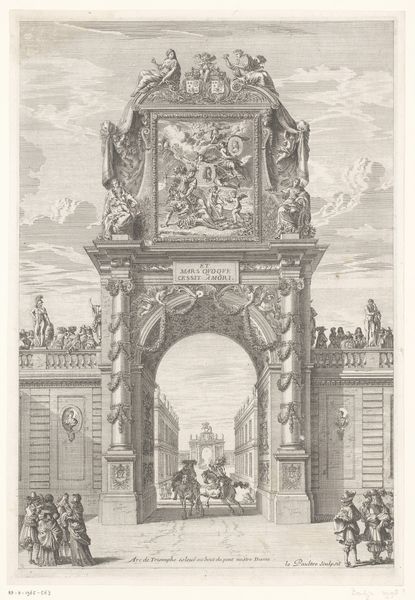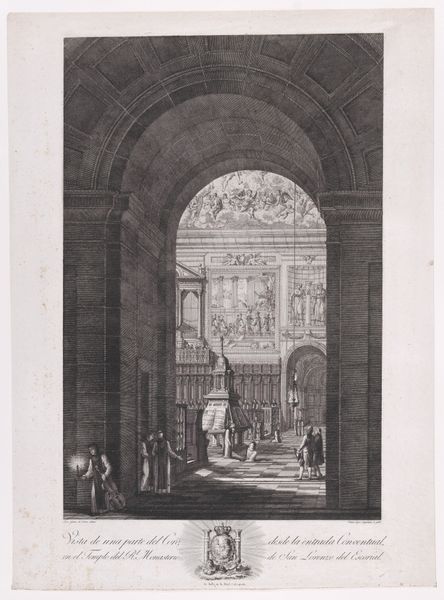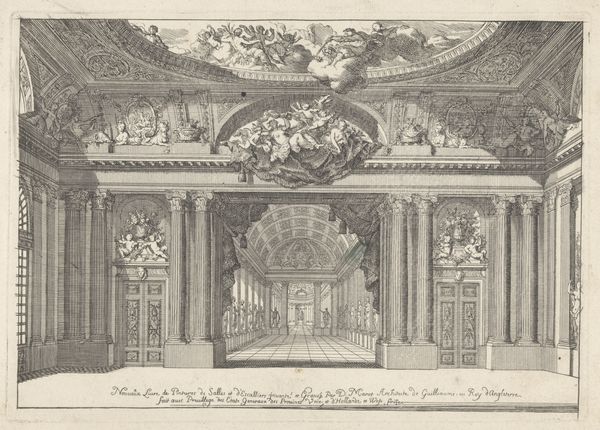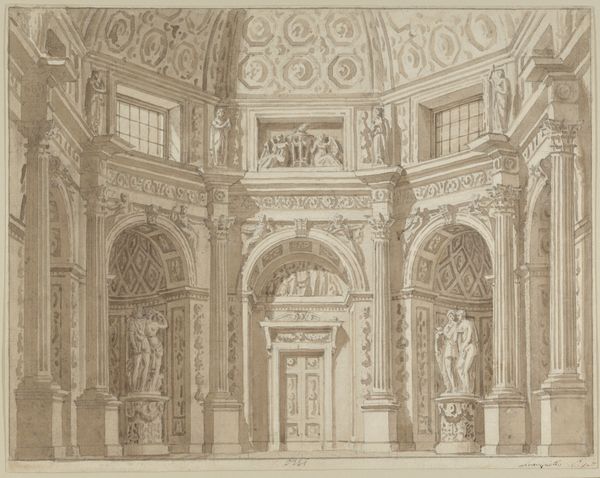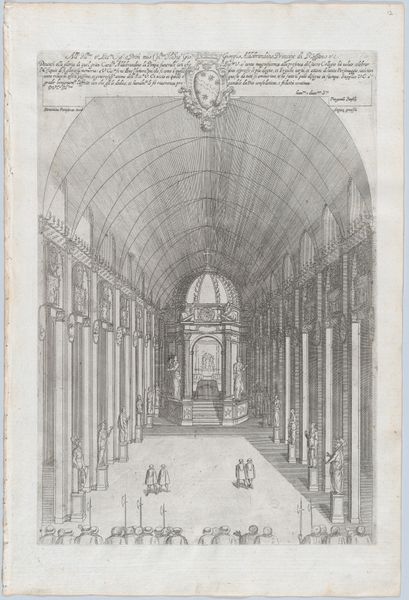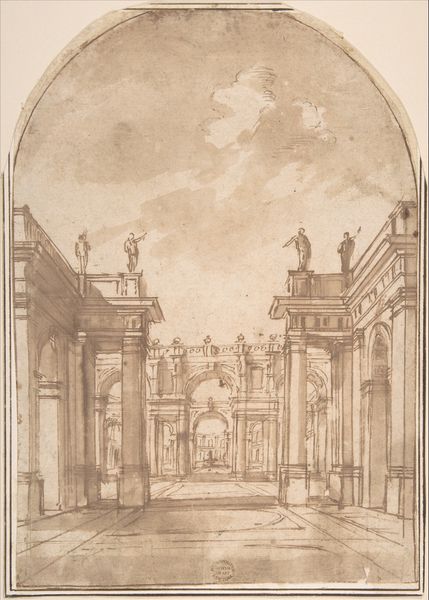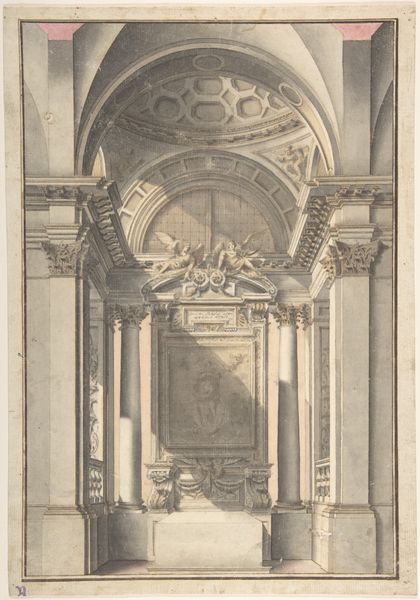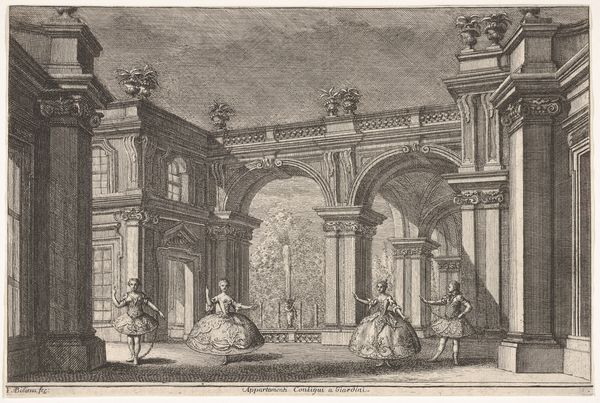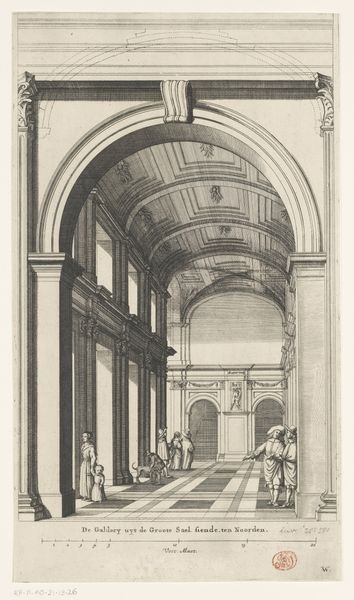
drawing, paper, pencil, engraving, architecture
#
drawing
#
neoclacissism
#
perspective
#
paper
#
pencil drawing
#
geometric
#
pencil
#
line
#
cityscape
#
history-painting
#
engraving
#
architecture
Dimensions: sheet: 72 × 53.6 cm (28 3/8 × 21 1/8 in.) mount: 73.4 × 54.3 cm (28 7/8 × 21 3/8 in.)
Copyright: National Gallery of Art: CC0 1.0
Curator: Oh, how grand! It’s so severe, imposing… I feel like I’m peering into the aspirations of a bygone empire. Editor: Exactly! This pencil and ink drawing, titled "An Architectural Capriccio with a Triumphal Arch," was created by Maurizio Pedetti in 1784. Curator: Capriccio is right—it’s so… idealized. A vision of perfect order, of course influenced by the neoclassical movement. But it feels charged with the historical weight of power and domination, doesn't it? The triumphal arch itself is such a potent symbol. Editor: Indeed. Note the drawing's medium, pencil and ink on paper, and then observe how Pedetti employs line and perspective to achieve a remarkable level of detail. His architectural precision transforms simple materials into a grand illusion. Curator: It almost feels like a stage set. Observe the people, relegated to small groups – the street almost empty – dwarfed by the architecture; these individuals lack real agency in relation to these structures, even actively kept separate from this space in its intended usage. It speaks to the social control inherent in these imposing architectural visions, as also emphasized through its title. Editor: Agreed. I'm interested in how this architectural rendering—presumably made by hand with simple tools and paper—presents an illusion of perfect order when the labor and process that brings that vision to reality are far more material, messier, more complicated than that the rendering portrays. Curator: That contrast really drives home the tension between the ideal and the real. The way that light falls so starkly—emphasizing certain elements while obscuring others—hints at a certain level of imposed values. Consider the artistic intentions! What does this "capriccio" actually reveal? Editor: Maybe it reveals the power of representation, of illusion. We are both analyzing it based on the very materials that the image attempts to obscure with its presentation. Curator: So the means through which this vision is articulated reflect social values. Art and representation shape us in really powerful ways. I now wonder, how do our built spaces continue to do that today? Editor: That’s fascinating. Ultimately, I am curious what Pedetti sought to convey about the role of art making and creative materials in society via this imagined structure, whose purpose might extend beyond what the viewer initially presumes.
Comments
No comments
Be the first to comment and join the conversation on the ultimate creative platform.
